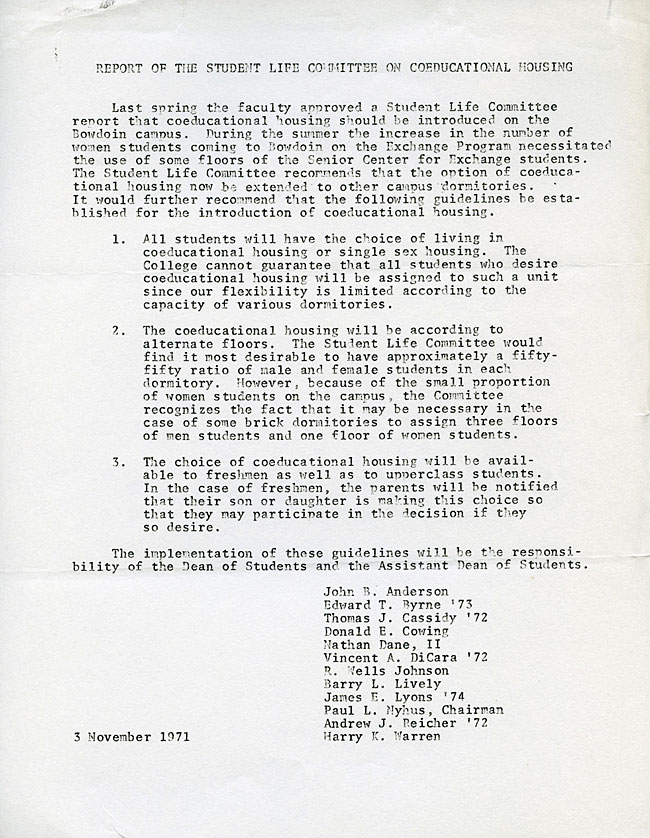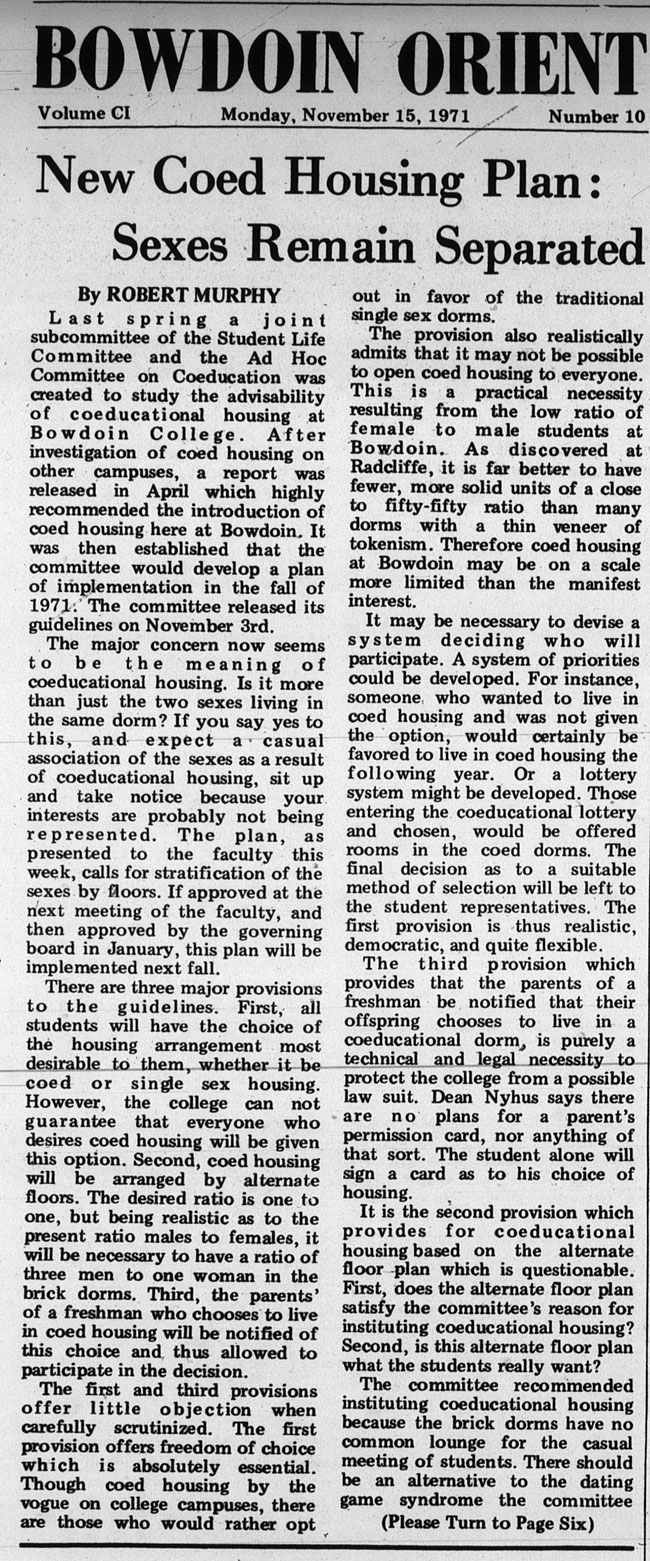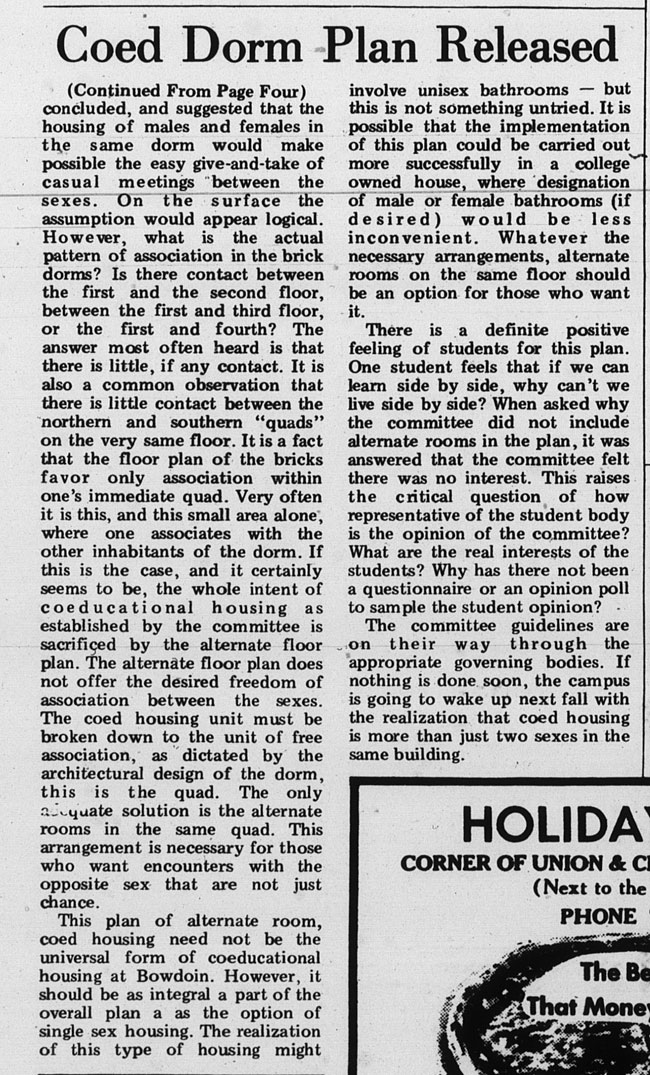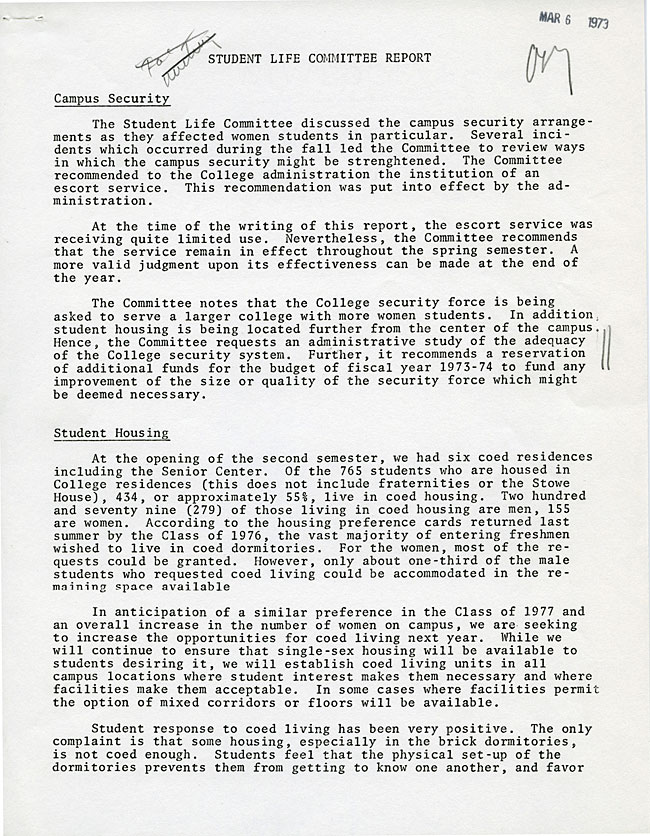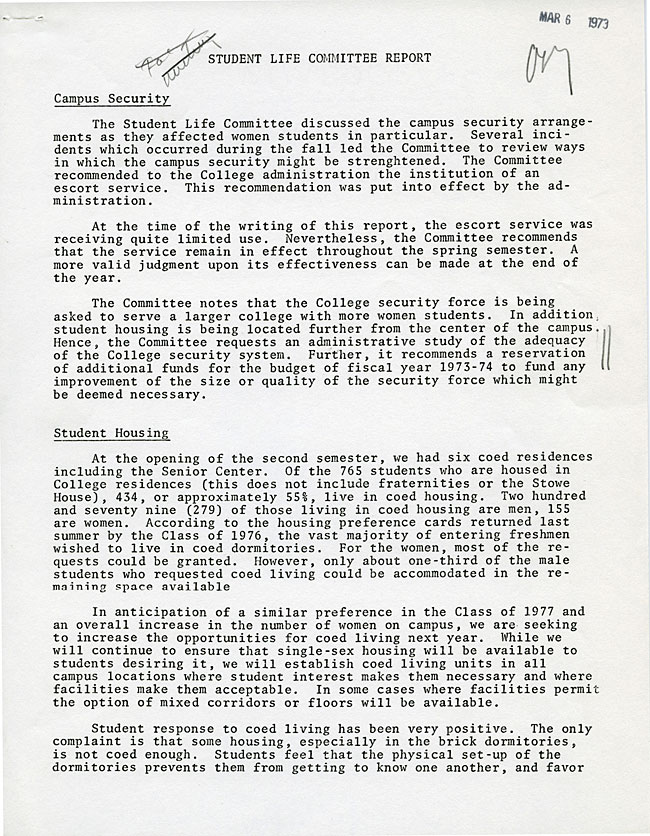The Student Life Committee was a board of Bowdoin faculty members who observed campus life and recommended changes they believed would improve the student culture and environment. The annual recommendations would be drafted into The Annual Report of the Student Life Committee. The report from 1968 focuses on the freshman year and the admission of women. An interesting option mentioned in the report was the establishment of a “co-ordinate college.” This excerpt omits pages 2-13 of the report in order to focus on page 14, where idea of a coordinate college is first introduced (Document SB, 8).
The committee reported three realistic avenues for admitting women to Bowdoin: adding women undergraduates to the current student body, replacing some male undergraduates with female undergraduates, or establishing a co-ordinate college for women. The section of concern on pages 19-21 introduces the admission of women through a coordinate college. Among the advantages to a coordinate women’s college was the “offering [of] unique opportunities” because there were few four-year colleges for women in Northern New England at that time. A separate institution for women would also allow Bowdoin to preserve traditions that may have been compromised by the campus’ integration.
The report also presents a series of questions about the degree to which the colleges should be separate. Would men and women share all facilities? How would both sexes be integrated in the classroom? Perhaps most importantly, how would the construction of another college campus be funded? Wealthier institutions were better suited for coordinate colleges they conclude. Finances were a significant part of Bowdoin’s decision to admit women directly to the existing campus.
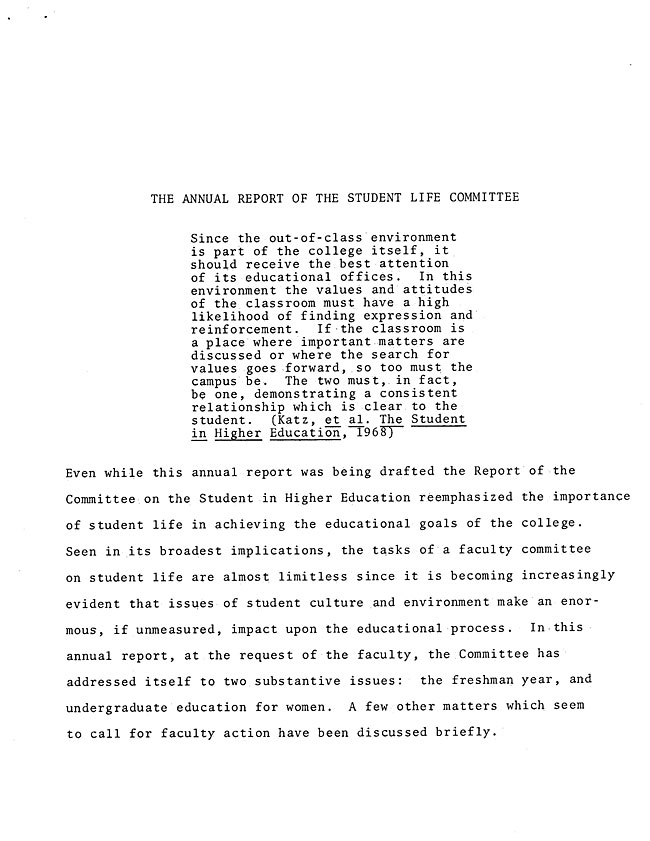
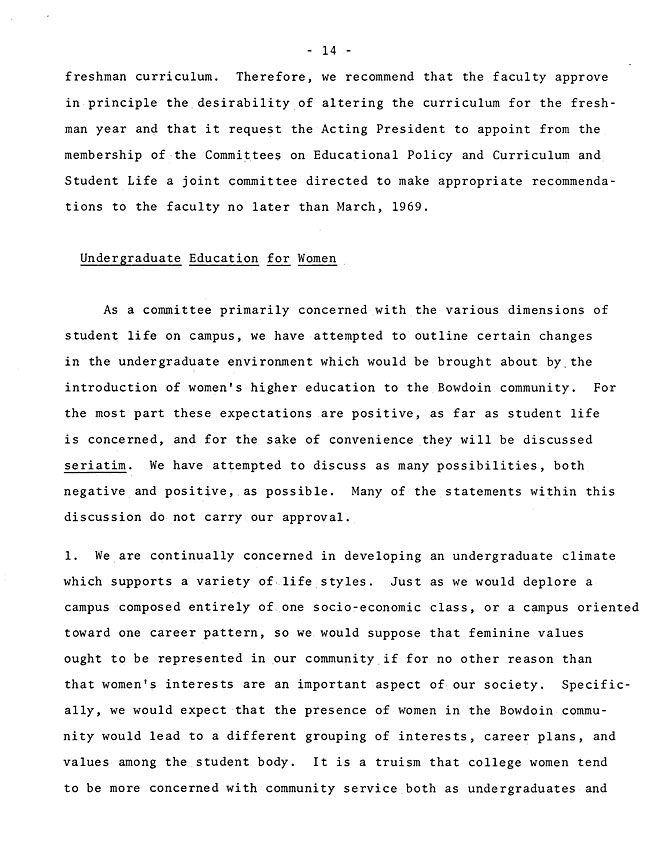
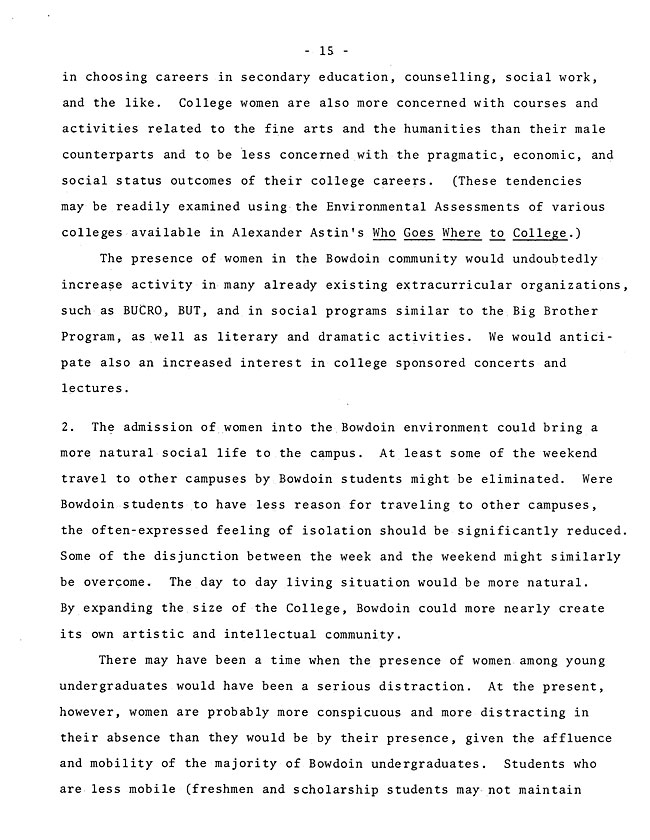
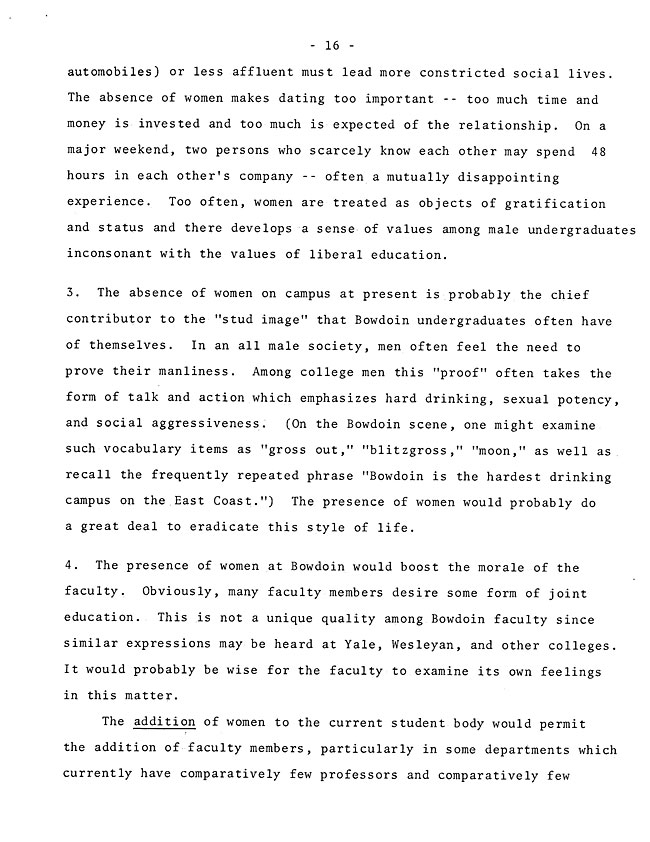
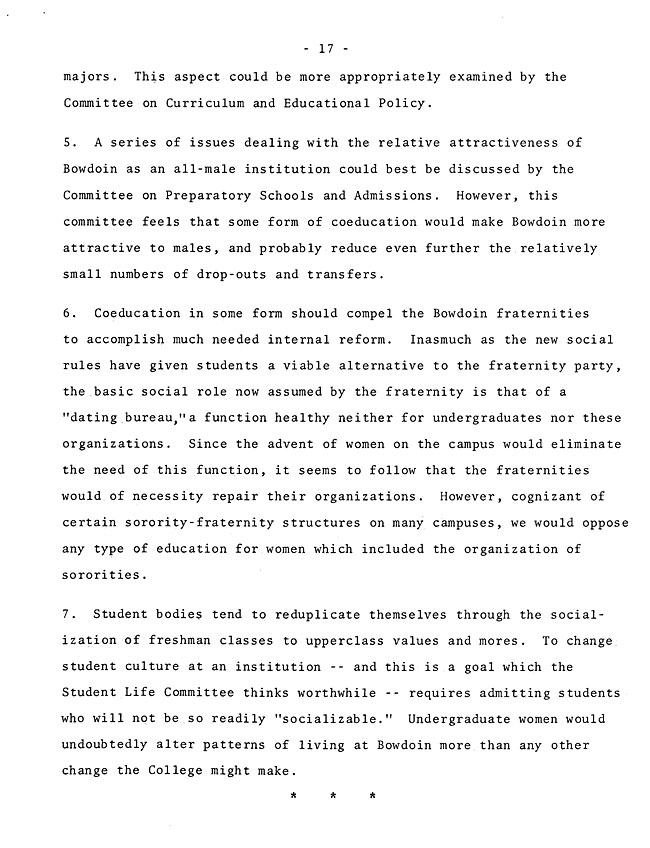
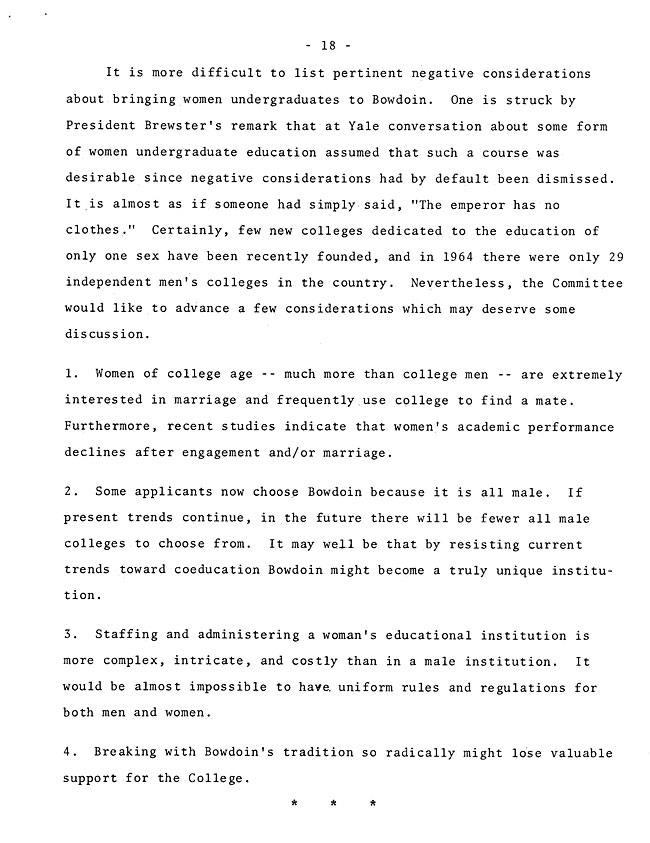
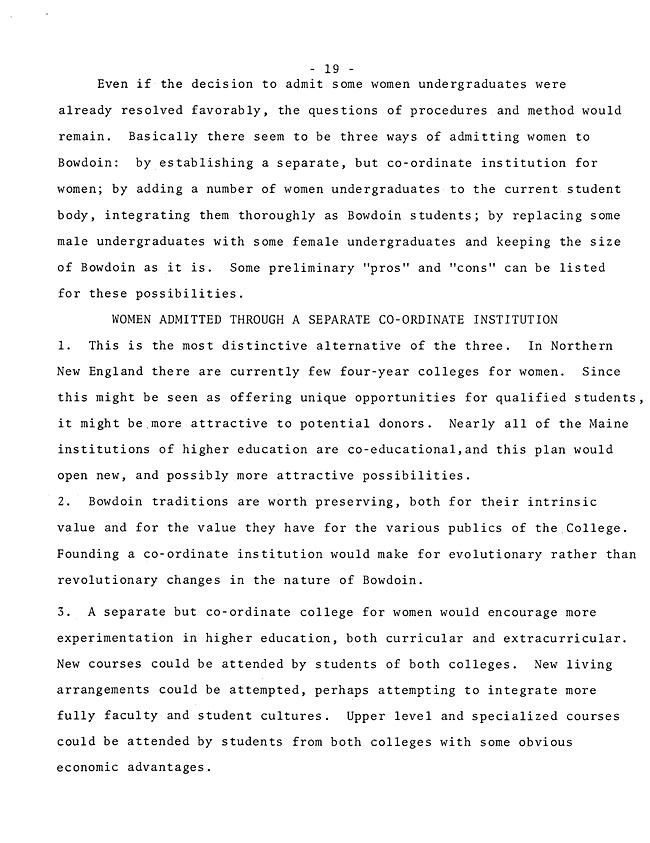
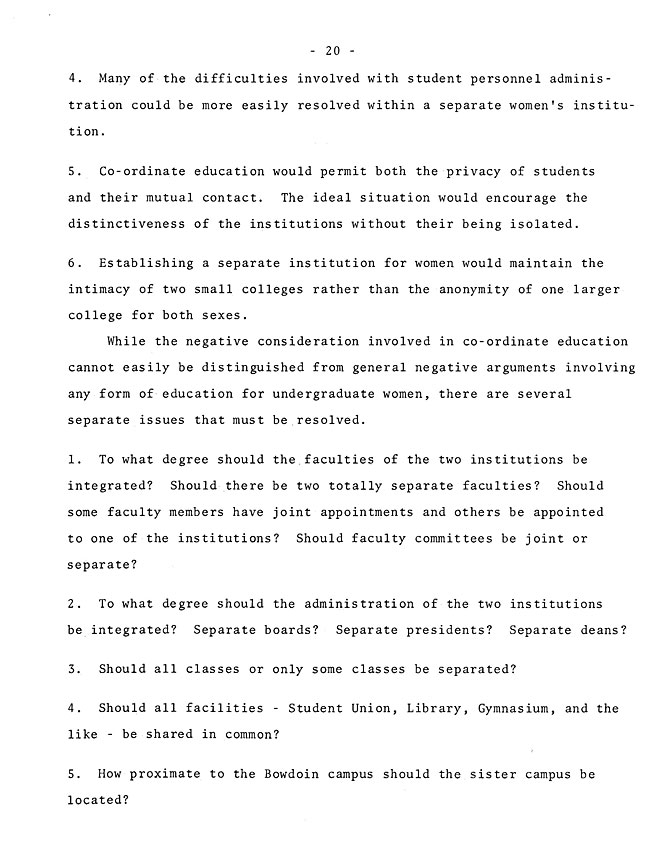
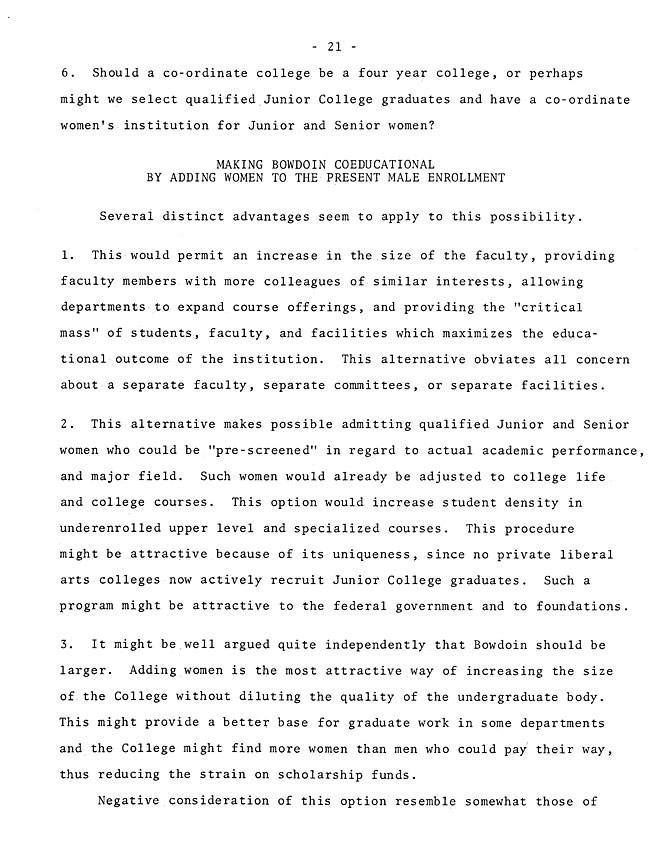

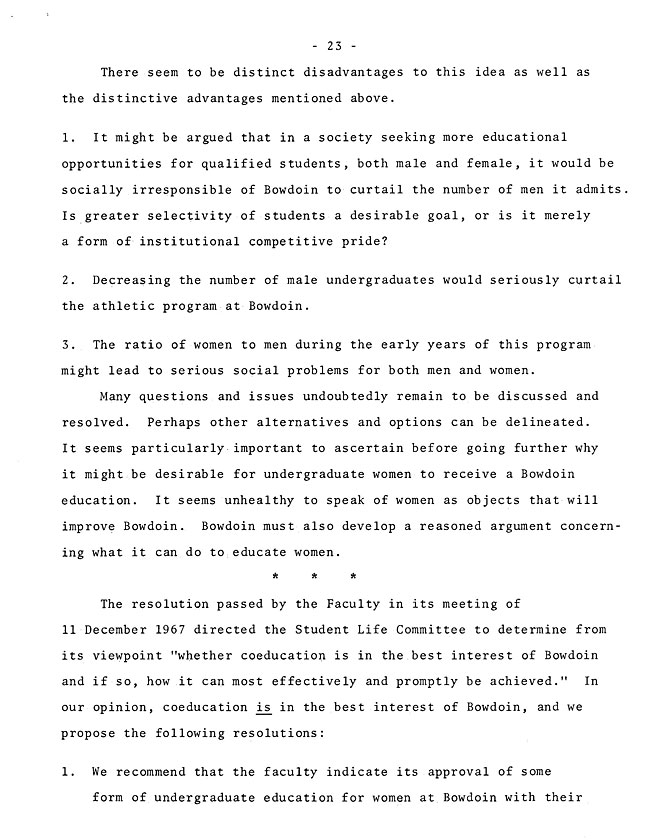
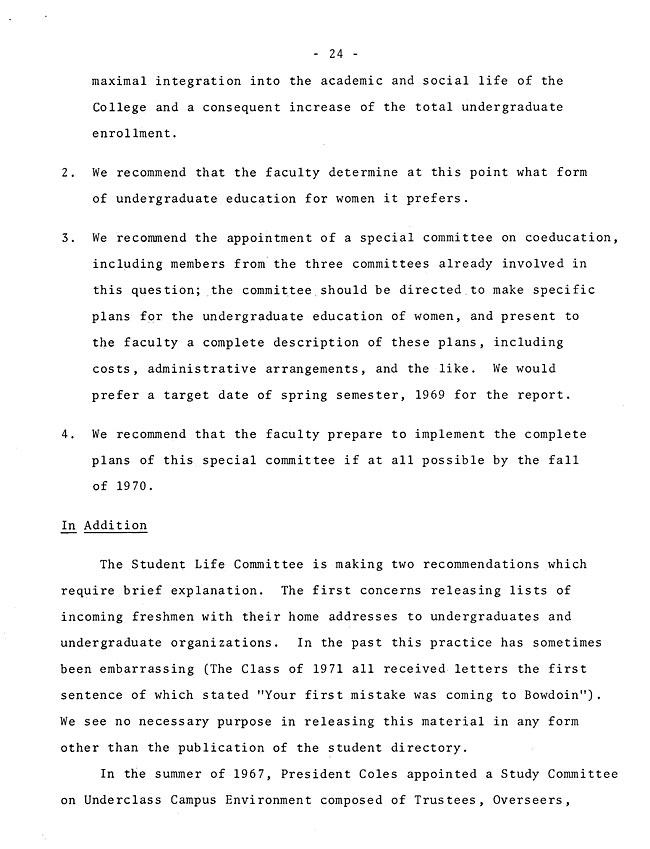
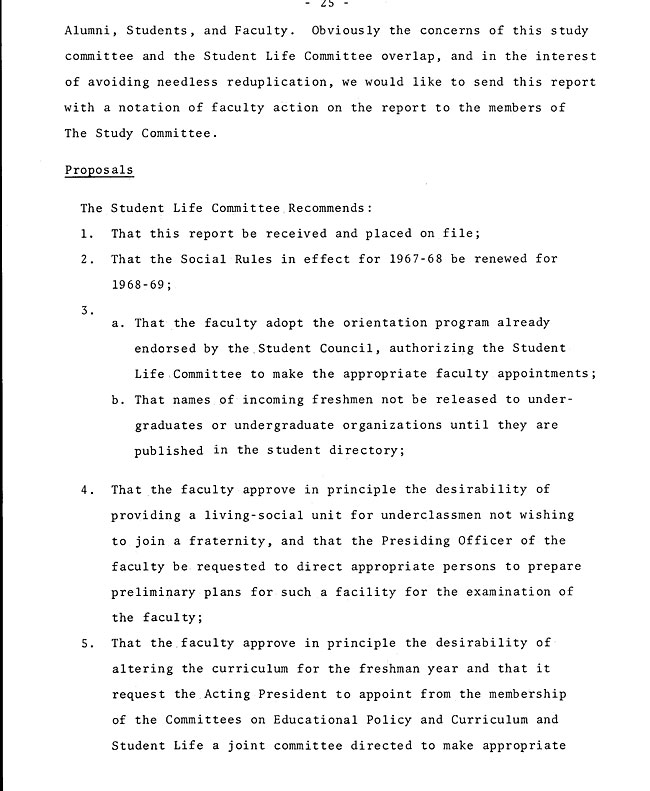
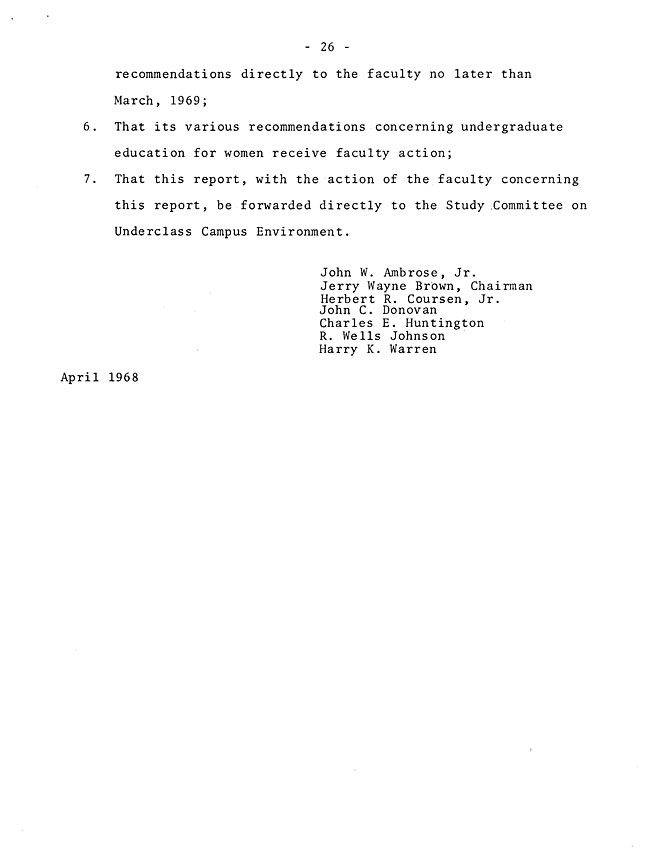
SB 8
